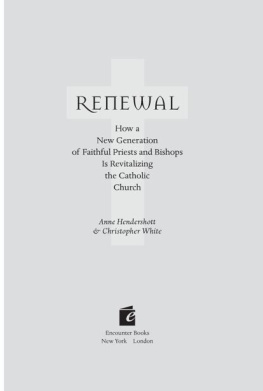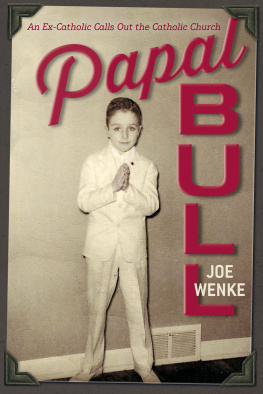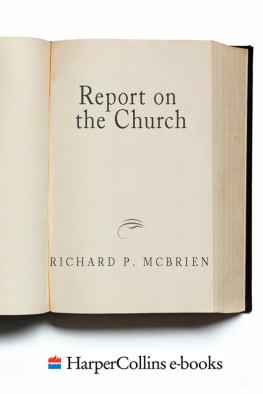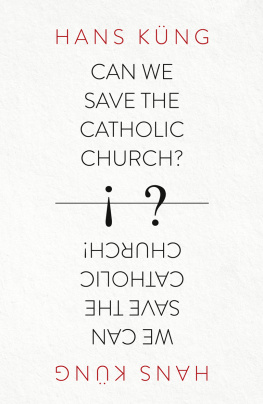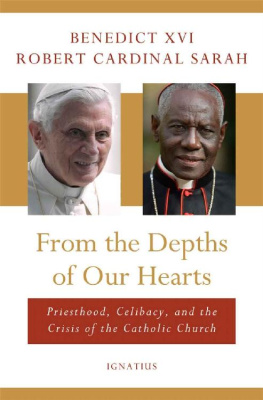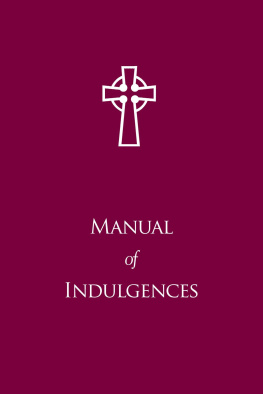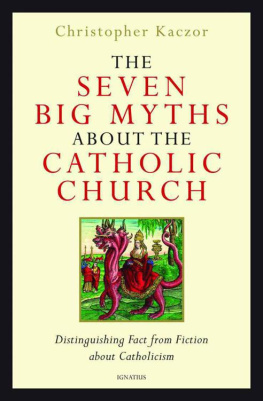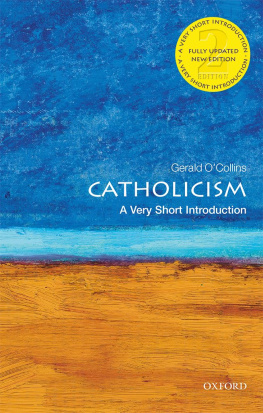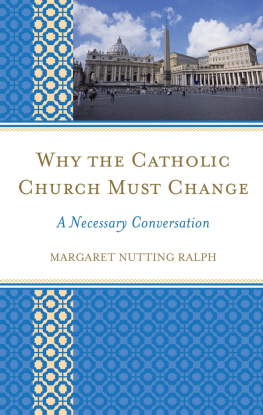Table of Contents
Never in history has modern man been in greater need of you... never has there been such loneliness in the midst of crowds, never such hunger in the face of satiation. Never has there been a more fertile ground for the seed and the harvest the Lord spoke of. All that is needed is a bearer of the Good News who speaks it with such authenticity that it can penetrate the most exhausted hearing, revive the most jaded language. With you lies the future and the hope. You and the Church you serve may be only a remnant, but it will be a saving remnant. WALKER PERCY, ADDRESS TO SEMINARIANS AT ST. JOSEPHS COLLEGE SEMINARY IN LOUISIANA (1983)
ACKNOWLEDGMENTS
We began this project in late 2011excited about the many signs of renewal we were witnessing in our Church and eager to share this good news with others (while also hoping to offer some correctives along the way). Since then, our enthusiasm has only increased, and we remain more excited than ever for both the present and future renewal of Catholicism throughout the world. Over the past few years, weve been encouraged by a number of individuals who deserve credit for their support of our work. In particular, we are grateful for The Kings College, where the early seeds of this project were initially planted and whose faculty, staff, and students have greeted our collaboration with much excitement and kindness.
While doing research for this book we had the rich pleasure of meeting a number of priests who have responded to Pope John Paul II and Pope Benedict XVIs call to the New Evangelization. Their lives are models of sacrifice, holiness, and a living witness to the transformative power of the gospel. These men include Fr. Carter Griffin, Fr. Bill Miscamble, Fr. Luke Sweeney, Fr. Roger Landry, and Fr. Brian Welterthank you for your service to our Church.
Finally, we wish to thank the good people at Encounter Books, who have shepherded this project from its early beginnings. In particular, we owe a great deal to Katherine Wong, Heather Ohle, and Roger Kimball, who deserve credit for their fine work in crafting this book to final form.
A word from Anne: I am grateful to my coauthor, Chris White, who helped to reframe this project from yet another depressing description of the culture wars into an optimistic look at the revitalization of the Church. I am also grateful to Carl Olson, editor of Catholic World Report , who provided a way for us to try out our ideas and theories in the initial stages of our project; and to Marvin Olasky, formerly the provost at The Kings College, who has given me the opportunity to teach some of the best students I have ever encountered. And, thank you to Daniel Kempton, Vice President of Academic Affairs at Franciscan University at Steubenville, for finding a way to help me become a contributor to the commitment Franciscan has made to the New Evangelization.
A word from Chris: In my early months as a new Catholic, it was my coauthor, Anne Hendershott, who served as an endless source of encouragement to my young faith. I will remain forever grateful for her invitation to partner with her on this project, and I hope that my contributions in some small way can match the kindness and wisdom that she has imparted to me during this time. In addition, Ive had the great privilege of interacting with a number of individualsinitially as professional contacts and now as personal friends. For their investment of their time and resources, I remain indebted to Francois and Therese Jacob, Jennifer Lahl, and the entire Center for Bioethics and Culture family, Maria McFadden Maffucci and Anne Conlon of the Human Life Foundation, Harry Bleattler, Mary Schwarz, Kate Monaghan, and Mary Eberstadt. Yet perhaps those who have been in the deepest trenches with me have been my reliable community of friends that support me in ways they will never fully understand. I cannot list all the names, but you know who you are. Finally, to my parents, thank you for first introducing me to the faith that sustains and motivates all of my endeavorsno matter how short I may fall of its teachings.
INTRODUCTION
In February 2013 when Pope Benedict XVI shocked the world with his surprise decision to abdicate the papacy, many critics seized the opportunity as further evidence of a Church in crisis. Some commentators were quick to speculate that this decision had little to do with Benedicts failing health and more to do with Church scandals. And during the conclave that elected his predecessor, much of the debate by those within and outside the Church focused on the need for reform of the Roman Curia, the Vaticans administrative body. Many wondered whether the pontiff would be an outside man or a Vatican insider. Would he be a conservative or a liberal? Could this new election bring about the possible changes so desperately sought after by progressive Catholics, such as womens ordination and an elimination of the celibacy requirement?
The election of Cardinal Jorge Mario Bergoglio from Argentina, now Pope Francis, was initially welcomed by most Catholicsincluding progressive media outlets that were quick to describe him as one of their own because of his concern for the plight of the poor. Yet the new pope is no liberation theologian, nor is he a political liberal. While serving as cardinal of Buenos Aires he clashed publicly with President Cristina Kirchner over her attempts to legalize same-sex marriage. In addition, he has issued some of the most strongly worded statements against abortion and euthanasia of all those issued by Church officials. At the same time, he has been a tireless advocate of the Churchs duty to help the poor and serve as good stewards of the environment. All of this is motivated by what he sees as the truth of Catholicism that should influence every aspect of our lives. In a meeting with College of Cardinals just days after his election, Pope Francis offered these words to his brother Cardinals:
Christian truth is attractive and persuasive because it responds to the profound need of human life, proclaiming convincingly that Christ is the one Saviour of the whole man and of all men. This proclamation remains as valid today as it was at the origin of Christianity, when the first great missionary expansion of the Gospel took place.
And that same address also stressed the need for courage as essential to their ecclesial ministries and proclaiming the truths of Catholicism to a world hostile to its teaching. Having encountered his own resistance, both from those inside and outside of the Church, Pope Francis knows that courage and boldnessalong with an uncompromising commitment to holinessmust be at the heart of a priests identity. When these attributes are present, the Church is at her best and is able to succeed. When they are neglected, the Church fails in her mission.
Similarly, in an address inaugurating the Year for Priests in 2009, Pope Benedict XVI asked, how can I not praise the courageous fidelity of so many priests who, even amid difficulties and incomprehension remain faithful to their vocation as friends of Christ, whom he has called by name, chosen and sent? The pope emeritus had reason to celebrate. After a long decade in the darkness surrounding the 2002 clergy abuse scandala time when progressive Catholics were predicting the end of the celibate male priesthood in books like Full Pews and Empty Altars and The Death of Priesthood we are seeing steady increases in the numbers of priestly ordinations throughout the world.
According to the Vaticans Central Office of Church Statistics, there has been an increase of more than five thousand Catholic priests globally in 2009 than there were in 1999. Now seventy men are studying to be priests there, and they have had to turn men away from other dioceses because they just do not have room for them all.

